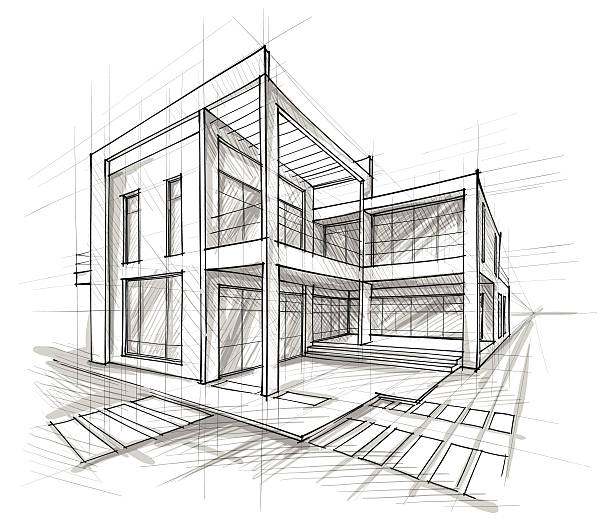How CDA Architects Incorporate Eco-Friendly Practices in Architectural Projects
How CDA Architects Incorporate Eco-Friendly Practices in Architectural Projects
Blog Article
A Comprehensive Review of Building Designs and Their Influence on Modern City Planning and Advancement
Building styles have actually long served as a mirror to the social worths and technological advancements of their time, playing a crucial duty in forming modern city preparation and advancement. From the splendour of Neoclassicism to the practical technique of Brutalism, each style has actually introduced unique principles that influence city looks and performance.
Historic Summary of Architectural Designs

As societies transitioned with the Center Ages, Gothic design emerged, identified by its verticality and detailed describing, mirroring the spiritual aspirations of the period. The Renaissance noted a resurgence of classical perfects, combining art and architecture in innovative means that affected subsequent designs across Europe.

Today, architectural designs remain to progress, driven by globalization and sustainability concerns, reflecting a dynamic interaction in between heritage and development. This historic overview highlights the value of architecture as a mirror of societal advancement and as a stimulant for urban advancement.
Trick Architectural Styles Explained
The diversity of architectural styles shows the myriad impacts that form our built atmosphere, each symbolizing distinctive characteristics and cultural importances. Secret building designs consist of Classical, Gothic, Baroque, Modernism, and Postmodernism, each representing distinct historic contexts and visual ideologies.
Timeless style, rooted in ancient Greece and Rome, emphasizes symmetry, proportion, and the use of columns (cda architects). In contrast, Gothic design, prospering in the center Ages, is identified by sharp arches, ribbed safes, and flying buttresses, creating a heavenly high quality in basilicas. Baroque design, emerging in the 17th century, is marked by grandeur, fancy ornamentation, and a dynamic interplay of light and shadow
Innovation, which obtained momentum in the very early 20th century, prioritizes function over kind, using brand-new products like steel and glass to develop minimalist structures. Postmodernism, reacting versus the austerity of Innovation, welcomes eclecticism and historical recommendation, commonly integrating lively elements and paradox.

Influence on Urban Planning
In forming the advancement of cities, building styles dramatically influence city planning choices. The option of building style commonly dictates the aesthetics, capability, and overall personality of urban settings. For example, modernism, with its focus on minimalism and functionality, motivates open rooms and the integration of modern technology, shaping city designs that focus on efficiency and ease of access. On the other hand, standard designs may highlight historic conservation, leading to metropolitan layouts that keep cultural heritage and promote pedestrian-friendly atmospheres.
Furthermore, architectural styles can affect zoning guidelines and land make use try this web-site of plans. Urban organizers must consider the prevailing architectural trends when developing districts, making sure that new advancements balance with existing frameworks. This consideration promotes natural metropolitan landscapes and enhances neighborhood identity.
The application of particular architectural styles can additionally affect socioeconomic aspects within a city. High-end modern styles might bring in upscale residents and organizations, leading to gentrification, while a lot more cost effective housing solutions could prioritize practical and lasting designs to suit diverse populaces. cda architects. Eventually, the interaction in between architectural designs and urban planning develops dynamic cities that mirror both historical context and modern needs, forming the lived experiences of their residents
Sustainability and Modern Style
Building designs play a critical duty in attending to contemporary difficulties, particularly in the world of sustainability. As urban locations expand and environmental problems heighten, modern design increasingly accepts lasting design concepts that focus on energy effectiveness, source conservation, and marginal ecological effect.
Contemporary building movements, such as biophilic style and green design, supporter for frameworks that balance with their environments, utilizing natural products and advertising biodiversity. These styles commonly include sustainable power resources, such as photovoltaic panels and wind turbines, to minimize dependence on nonrenewable fuel sources and lower carbon impacts.
Moreover, the best site combination of innovative technologies, such as wise structure systems, enhances energy administration, maximizing resource usage while making sure occupant comfort. Cutting-edge water monitoring strategies, consisting of rainwater harvesting and greywater recycling, additional add to lasting metropolitan atmospheres.
Significantly, sustainability extends beyond environmental worries; it includes social and financial dimensions also. By cultivating area wellness and promoting inclusivity, modern-day building designs straighten with lasting growth objectives. As a result, the advancement of building methods proceeds to shape resistant cities that not only meet the requirements of the present but likewise safeguard the future for generations to come.
Neighborhood Engagement in Layout
Neighborhood interaction in design functions as an essential bridge between engineers and the populations they offer, ensuring that the constructed atmosphere mirrors the demands and ambitions of its users. This joint process welcomes neighborhood members to add their insights and choices, fostering a feeling of ownership and duty toward the rooms they populate.
Effective area engagement uses various approaches, such as workshops, surveys, and public discussion forums, to gather varied point of views. These strategies assist in a two-way discussion, enabling engineers to comprehend neighborhood contexts while equipping residents to voice their problems and desires. This inclusivity not only boosts the design high quality however additionally promotes social equity by addressing the distinct difficulties faced by marginalized groups.
In addition, community interaction can bring about innovative options that could not emerge in a conventional layout procedure. By integrating regional expertise and social values, designers can develop rooms that resonate more deeply with individuals, boosting usability and sustainability. Ultimately, prioritizing neighborhood involvement in layout processes results in environments that nurture social interactions, assistance wellness, and reinforce area connections, thereby playing More Help an essential function in shaping contemporary city landscapes.
Verdict
Architectural styles have actually exceptionally influenced modern city preparation and growth, showing developing cultural and technical contexts. As cities continue to grow and adjust, the continuous discussion between building heritage and contemporary design concepts will remain crucial in developing comprehensive, dynamic spaces that boost high quality of life and promote social equity.
Report this page